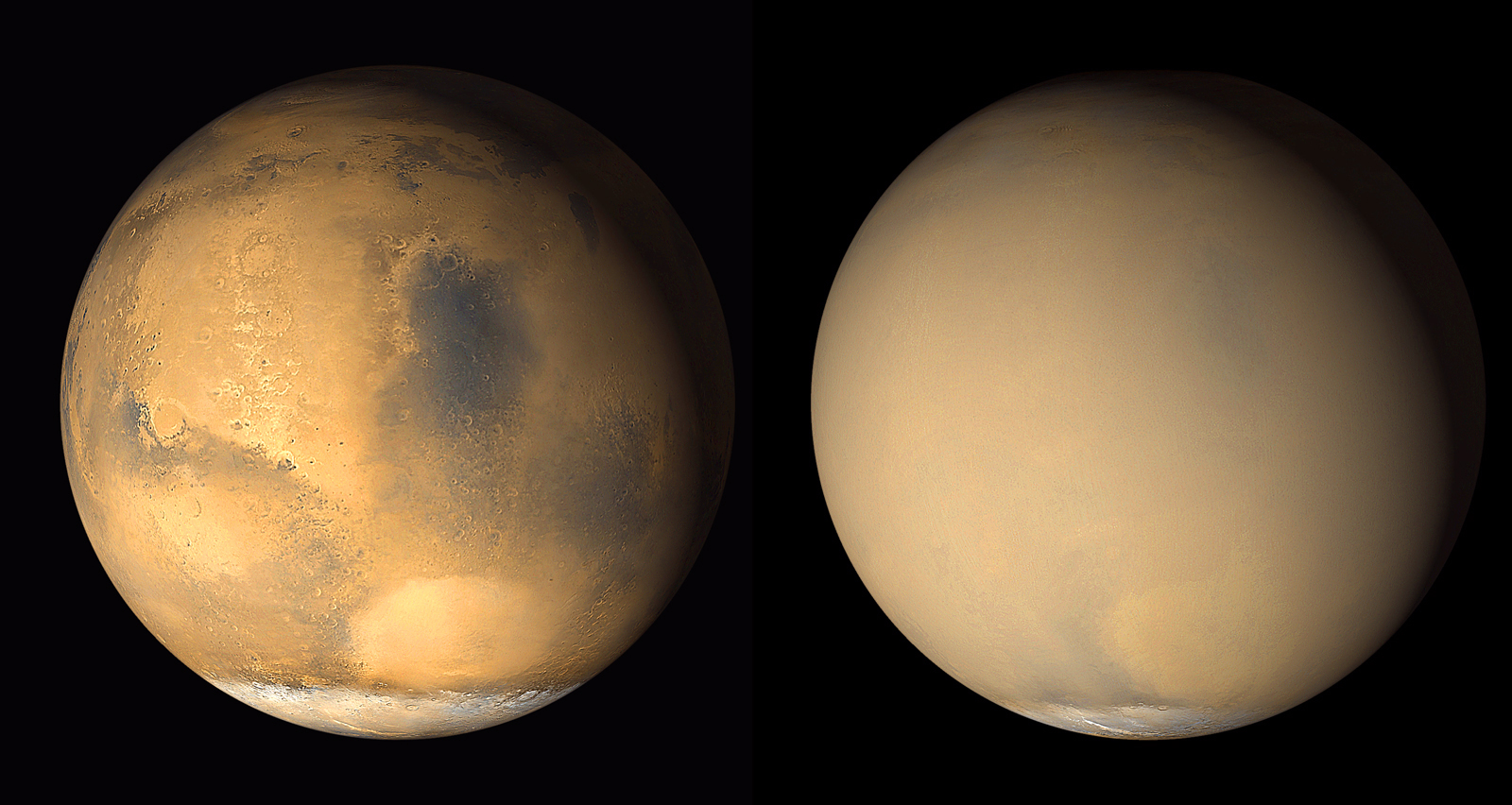RoadMap: studying the ubiquitous yet poorly known Martian dust
As part of the European Horizon 2020 program, the RoadMap project (Role and impact of dust and clouds in the Martian atmosphere) has just started
Mars is the planet to which the most space missions have been dedicated. A parade of rovers and landers has landed on its surface, and all the images they have sent have revealed one thing: the abundance of dust. No matter which way they looked, Curiosity, InSight, and their predecessors photographed a planet covered in rust-colored dust, not just on the ground, but also in the atmosphere. With Mars being the focus of future space exploration, both robotic and human, it is crucial to improve our understanding of the Martian atmosphere and climate.
“Although dust is present throughout the Martian atmosphere, its abundance and physical properties are still poorly defined. Similarly, the impact of dust on the composition, structure and dynamics of the atmosphere is only beginning to be addressed. Specifically, accurate knowledge of the characteristics of dust and ice clouds is crucial for the interpretation of the remote sensing observations, both in the infrared and the ultraviolet spectral regions”, explains RoadMap’s Principal Investigator, Dr. Ann Carine Vandaele of BIRA-IASB.

A MULTIDISCIPLINARY APPROACH
RoadMap, a project of the European Horizon 2020 program that has just started, seeks to solve these unknowns through the collaboration of experts from different countries in the specific fields involved in the Martian dust puzzle.
Combining these three approaches will answer many questions that have remained open about Mars: Why do we see considerable amounts of dust in the atmosphere outside of dusty seasons? How do dust storms, which can sometimes cover the entire planet, start, grow and end? Why are dust storms so different in size from year to year? If there are clear indications that there was plenty of liquid water in the past and warmer temperatures, where has that water gone? How did it escape the Martian atmosphere?
RoadMap will enhance our understanding of the Martian atmosphere and provide a new generation of highly accurate data, increasing the scientific return from past and current missions to Mars and providing the keys to future planetary missions.
THE ROADMAP RESEARCH TEAMS
The project consortium is made up of the Royal Belgian Institute for Space Aeronomy (BIRA-IASB, Belgium), project coordinator, the University of Aarhus (AU, Denmark), the University of Duisburg & Essen (UDE, Germany), the Institute Ceramics and Glass (ICV-CSIC, Spain) and the Institute of Astrophysics of Andalusia (IAA-CSIC, Spain), which leads the participation of the CSIC in the project.
The BIRA-IASB will review the spatial data registered taking into account the radiative properties of dust and clouds obtained in the laboratory. “We will focus on two European missions that are still active around the red planet. In particular, we will use ExoMars TGO's NOMAD instrument, which has been optimized for the detection of trace gases, dust and ice clouds in the Martian atmosphere, ”notes Ann Carine Vandaele. BIRA-IASB will also improve the 3D modeling of the Martian atmosphere by better characterizing dust-related processes, such as lift and transport, as well as the radiative impact of dust.
The Royal Belgian Institute for Space Aeronomy (BIRA-IASB, Belgium), the coordinator of the project, closely collaborates with teams from the Aarhus University (AU, Denmark), the Duisburg & Essen University (UDE, Germany), the Instituto de Ceramica y Vidrio (ICV-CSIC, Spain), and the Instituto de Astrofísica de Andalucia (IAA-CSIC, Spain), each bringing their own specific expertise to the RoadMap project.
BIRA-IASB will reinvestigate space data recorded using the improved laboratory radiative properties of dust and clouds. “We will focus on two European missions that are still active around the Red Planet. We will in particular make use of the ExoMars TGO instrument NOMAD, which has been optimized for the detection of trace gases, dust and clouds in the Martian atmosphere”, says Vandaele. BIRA-IASB will also improve the 3D modelling of the Martian atmosphere through better parameterisations of the processes related to dust, like lifting and transport, and the radiative impact of dust.
The planetary environment facility at AU has the capability of recreating the conditions found close to the surface of Mars and will be used in order to study the generation and properties of Mars analogue aerosols, in close collaboration with UDE, ICV-CSIC and IAA-CSIC.
UDE will carry out experiments with different Martian simulants in view of characterizing the physical properties of dust particles lifted and their potential aggregation.
ICV-CSIC possesses the expertise to create and characterize the set of Martian dust analogue samples with shapes, sizes, and compositions representative for the Martian atmosphere in their laboratories.
IAA-CSIC will produce a unique database of experimental scattering properties of Martian dust analogues that will feed the radiative transfer model. Advanced numerical techniques validated on the experimental data will subsequently be used to produce a database of computed optical properties spanning the complete observational wavelength range.
“Previous results have already shown that the very common practice of assuming that the dust grains are spherical can lead to large errors in the interpretation of the observations - points out Olga Muñoz, a researcher at the Institute of Astrophysics of Andalusia who participates in the project and who runs the dust analysis laboratory -. Also, ignoring that the sunlight re-emitted by dust particles in all directions is polarized can lead to significant errors that will ultimately affect climate calculations. To finally understand Martian dust and its influence on the atmosphere we need analogues that are as close to reality as possible, as well as a complete study of the properties of light, and this project seeks to address those questions".
This project has received funding from the European Union’s Horizon 2020 research and innovation programme under grant agreement No 101004052.
Web proyecto Roadmap: https://roadmap.aeronomie.be/
Instituto de Astrofísica de Andalucía (IAA-CSIC)
Unidad de Divulgación y Comunicación
Silbia López de Lacalle - sll[arroba]iaa.es - 958230676
https://www.iaa.csic.es
https://divulgacion.iaa.csic.es

